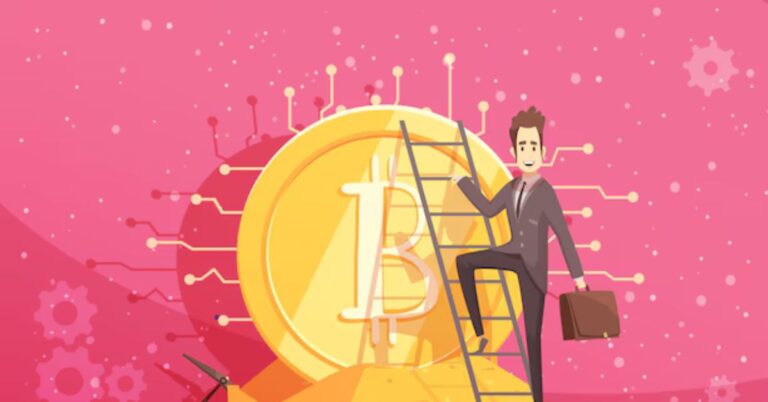Understanding BRBN Tracking: A Comprehensive Guide
In recent years, the advancement of technology has significantly transformed various sectors, from healthcare and logistics to finance and transportation. Among the many innovations, tracking systems have emerged as pivotal tools for ensuring efficiency, accountability, and security. One such tracking system that has gained attention is BRBN Tracking. This article will delve into the concept of BRBN Tracking, its significance, applications, and how it has changed the way we track goods and services.
What is BRBN Tracking?
BRBN stands for Bharatiya Reserve Bank Note Mudran Private Limited, which is a subsidiary of the Reserve Bank of India (RBI) responsible for printing currency notes in India. The term “BRBN Tracking” typically refers to a system used to monitor the production, movement, and distribution of currency notes from the printing presses to their final destinations. While BRBN Tracking initially refers to currency note tracking, it is part of a broader trend where organizations utilize similar tracking mechanisms to enhance transparency, prevent fraud, and ensure the integrity of valuable materials.
The BRBN Tracking system helps the Reserve Bank of India, along with other authorities, keep track of the quantities of banknotes in circulation, their condition, and where they are in the distribution chain. In essence, BRBN Tracking serves as a crucial tool to maintain the overall security of the currency system in India.
The Importance of BRBN Tracking
The significance of BRBN Tracking cannot be overstated. India, being one of the largest economies in the world, deals with enormous volumes of currency notes in circulation daily. For a country of this scale, maintaining control over the circulation of currency is vital for several reasons, including preventing counterfeit currency, minimizing the risk of theft or loss, and ensuring the efficient circulation of new and old notes.
Moreover, BRBN Tracking plays a critical role in ensuring that currency notes are printed and distributed in accordance with government guidelines. For instance, by having a system in place to track each currency note’s journey from the press to its final destination, authorities can easily monitor potential discrepancies and take necessary corrective measures.
For financial institutions, the use of BRBN Tracking helps in streamlining operations by allowing for better cash management. Tracking also plays an essential role in verifying the authenticity of banknotes, thereby aiding in reducing the circulation of counterfeit notes. With the rise in digital transactions and the increasing demand for physical currency in certain regions, BRBN Tracking offers transparency and guarantees the accountability of every note printed.
How Does BRBN Tracking Work?
BRBN Tracking operates through a combination of sophisticated technology, data management systems, and human oversight. The process begins at the printing presses where currency notes are produced. Each currency note is assigned a unique identifier or tracking code. These identifiers could be in the form of barcodes, QR codes, or even embedded RFID (Radio Frequency Identification) chips that are integrated into the design of the notes. The unique codes ensure that every note is traceable from the moment it is printed to when it is deposited or withdrawn from circulation.
The tracking system is highly systematic, capturing details such as the quantity of notes printed, the serial numbers, the denomination, and the place of origin. Once a batch of notes is printed, it is packaged and dispatched to different Reserve Bank branches or regional offices for distribution to commercial banks. The movement of these notes is carefully logged and tracked at every checkpoint along the supply chain, whether it’s from the printing press to regional storage facilities, or from the bank’s vaults to ATMs and local branches.
In addition to physical tracking, BRBN Tracking is heavily reliant on advanced software that compiles and analyzes data, offering insights into currency note lifecycle stages, ensuring that notes are in good condition, and identifying notes that need to be replaced or destroyed due to wear and tear.
Key Applications of BRBN Tracking
Preventing Counterfeit Currency
One of the primary benefits of BRBN Tracking is its role in preventing the spread of counterfeit currency. By assigning each note a unique identifier, tracking systems can help confirm whether a note is legitimate or fraudulent. The use of advanced technologies like RFID and QR codes also aids in this process by making it more difficult for counterfeiters to replicate notes. As such, BRBN Tracking enhances the overall security of India’s currency system and minimizes the circulation of fake notes.
Ensuring Efficient Cash Distribution
Efficient management of cash flow is vital for maintaining a smooth economy. With BRBN Tracking, the movement of currency notes from the printing press to the Reserve Bank, and then to commercial banks, is meticulously monitored. This enables authorities to ensure that the right amount of currency is distributed to areas that need it the most. For instance, during high-demand periods, such as festive seasons or times of economic crises, tracking ensures that currency notes are available where they are most required.
Monitoring the Condition of Currency Notes
Over time, currency notes tend to degrade due to handling, wear, and exposure to environmental conditions. BRBN Tracking allows authorities to monitor the condition of currency notes in circulation and determine when they need to be replaced or destroyed. This helps maintain the integrity of the currency and reduces the chances of the public encountering damaged or unusable notes.
Enhancing Transparency and Accountability
The integration of tracking systems improves transparency in the currency distribution process. Government and financial institutions can trace the movement of currency notes, which reduces the possibility of fraud or theft. Furthermore, BRBN Tracking provides a valuable audit trail for any discrepancies, helping authorities hold individuals accountable for any irregularities.
Streamlining Currency Management for Financial Institutions
Commercial banks, financial institutions, and ATM operators benefit significantly from BRBN Tracking. By having a real-time view of the cash available in various branches and ATMs, they can streamline their cash management strategies. Banks can more accurately predict demand, ensuring that they have enough currency available for withdrawals and deposits. This minimizes the likelihood of ATMs running out of cash and reduces the logistical costs associated with currency transportation.
Technological Advancements in BRBN Tracking
The evolution of technology has made BRBN Tracking increasingly sophisticated. Today, the use of Internet of Things (IoT) devices, blockchain technology, and advanced data analytics has enhanced the precision and reliability of currency note tracking systems.
IoT-enabled sensors can be used to track the physical condition of notes in real-time. These sensors can detect changes in temperature, humidity, and other environmental factors that could affect the quality of the notes. This data can be analyzed to determine when notes should be replaced or taken out of circulation, improving the overall management of currency.
Blockchain technology, known for its ability to provide secure, immutable records of transactions, can also be integrated into BRBN Tracking systems. Blockchain could enhance the transparency and security of currency note tracking by creating an indelible record of every note’s movement throughout the supply chain.
Furthermore, with the integration of machine learning and artificial intelligence, BRBN Tracking systems are becoming more efficient in identifying anomalies, predicting potential issues, and optimizing the flow of currency across regions.
Challenges in Implementing BRBN Tracking
Despite its many benefits, the implementation of BRBN Tracking comes with a set of challenges. One of the primary hurdles is the sheer scale of India’s currency system. With billions of notes in circulation, maintaining an efficient tracking system that covers every single note requires substantial resources, both in terms of technology and human effort.
Another challenge is ensuring data accuracy. While sophisticated software and tracking technologies have made it easier to monitor currency, human error, technical malfunctions, or cyber threats can still compromise the integrity of the system. Ensuring that all parties involved in the tracking process adhere to strict protocols is essential to minimizing these risks.
Lastly, the cost of implementing and maintaining an advanced tracking system can be substantial. While the long-term benefits may outweigh the initial investment, the financial cost of technology upgrades, training, and security infrastructure may be a concern for some stakeholders.
Future of BRBN Tracking
The future of BRBN Tracking looks promising, especially with the continuous advancements in technology. As the world moves towards digitization, it is possible that BRBN Tracking systems will integrate even more with digital currency systems. We may also see the widespread use of biometric and facial recognition systems to track currency at a more granular level.
Additionally, with the ongoing push for sustainability, BRBN Tracking systems may evolve to include features that allow for the recycling of old and worn-out notes, further reducing the need for printing new currency and contributing to environmental conservation.
Conclusion
BRBN Tracking is an integral part of India’s currency management system. From preventing counterfeit notes to ensuring the efficient circulation and maintenance of currency, it plays a crucial role in upholding the integrity of India’s economy. While there are challenges in implementing such a large-scale system, the benefits far outweigh the drawbacks. As technology continues to evolve, so too will BRBN Tracking, making currency management more secure, efficient, and transparent for all stakeholders involved.







